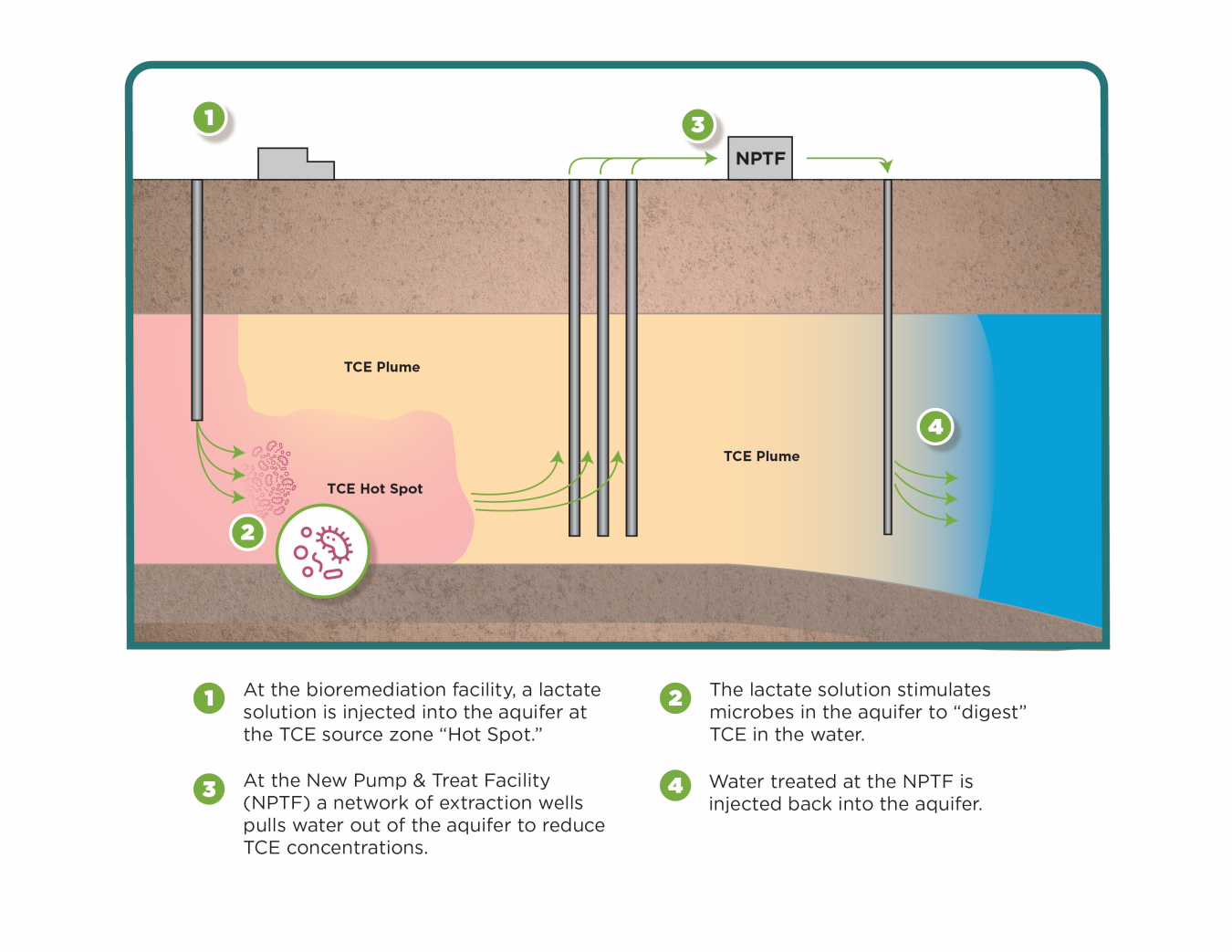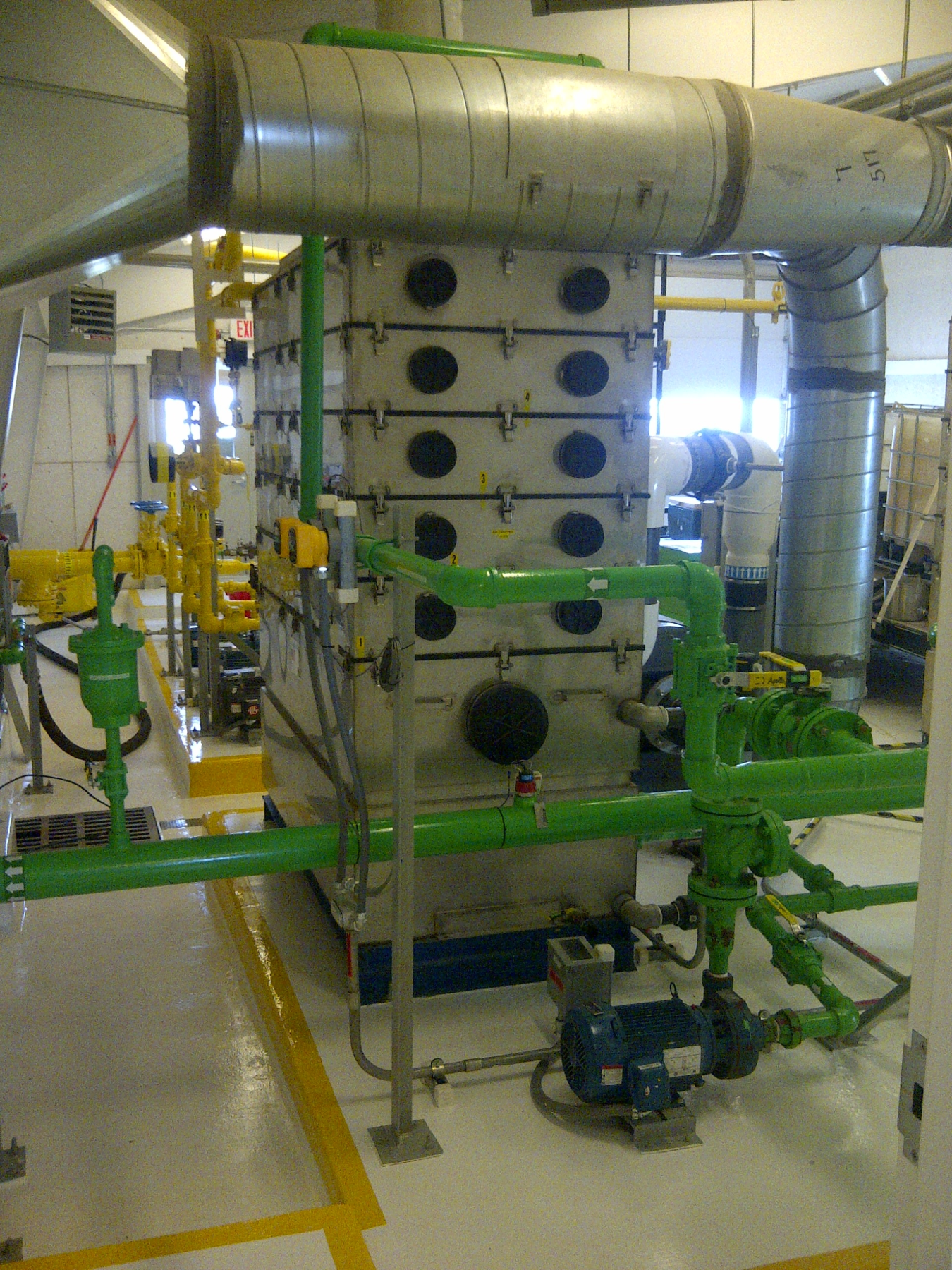A groundwater treatment well that EM installed two years ago at the Idaho National Laboratory Site is working in parallel with a pump-and-treat system to yield great dividends for the water quality of the underlying Snake River Plain Aquifer.
Office of Environmental Management
December 5, 2023
IDAHO FALLS, Idaho — A groundwater treatment well that EM installed two years ago at the Idaho National Laboratory Site is working in parallel with a pump-and-treat system to yield great dividends for the water quality of the underlying Snake River Plain Aquifer.
The new well at the former Test Area North (TAN) facility is used with an existing well to inject a sodium lactate and fatty acid solution directly into the aquifer in a simple, effective treatment method called bioremediation. The new well was needed to further distribute the sodium lactate solution across an area of high trichloroethylene (TCE) concentrations that had not been reached by injections at other wells. TCE was historically used as an industrial solvent at TAN.
The solution is an organic material that stimulates naturally occurring microorganisms to “digest” TCE from the groundwater and effectively “treat” the TCE with the goal of reducing the concentrations of the solvent to meet regulatory standards.
Due to a complex subsurface geology, treated water and the lactate solution move through the aquifer at an average rate of 0.2 to 0.35 feet per day. The future of the facility and the overall effectiveness of the applied treatments will be determined over time. The area of the aquifer directly underneath the TAN facility is not used as a source of drinking water.
TAN was constructed in the 1950s and hosted the Aircraft Nuclear Propulsion program. After 1961, the facility was used for additional nuclear reactor research. During its operation, TAN used a well to inject radioactive and hazardous wastewater directly into the underlying aquifer, a common industrial practice until the 1980s. This practice created a plume in the aquifer that was the subject of a cleanup record of decision by the DOE, U.S. Environmental Protection Agency and state of Idaho in the 1990s. Actions outlined in the record of decision are addressing the plume and improving the water quality of the aquifer.

The New Pump and Treat Facility uses a network of extraction wells to move contaminated water from the Snake River Plain Aquifer to the facility, where a technology known as an air stripper removes contaminants by evaporation.
Since 2002, EM has employed the use of the above-ground treatment unit called the New Pump and Treat Facility (NPTF). This facility uses a network of extraction wells to move water from the aquifer to the facility, where a technology known as an air stripper removes contaminants by evaporation. Treated water that meets regulatory standards is then reinjected into the aquifer. Groundwater that is treated at the NPTF must undergo regular compliance testing and continues to meet the standards required for reinjection into the aquifer.
NPTF treated 8.7 million gallons of TCE-affected groundwater in the fiscal year ending Sept. 30. A total of 865 million gallons of the groundwater have been treated to date.
Groundwater is monitored regularly at the edge of the plume to ensure that concentrations are below regulatory standards and that the plume is not expanding beyond what is allowed in the record of decision.
-Contributor: Carter Harrison
To receive the latest news and updates about the Office of Environment Management, submit your e-mail address.

